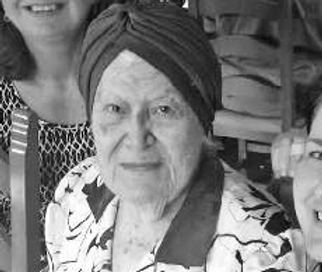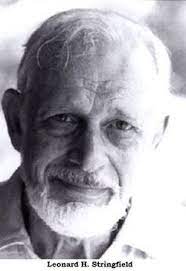by Charles Lear, author of “The Flying Saucer Investigators.”
 In last week’s blog, we looked at the cottage industry that grew up around the Roswell incident. We noted that people continue to cash in on it by coming up with “new evidence” that is promised to be “the smoking gun” that ultimately fails to live up to that promise. In a pattern that has continued for decades, once one piece of “evidence” is knocked down, another one pops up in its place. This happened fairly recently in the case of the “Roswell Slides,” which were said to be pictures of an alien recovered from Roswell, but turned out to be pictures of a mummified two-year-old boy. One of the people involved, Anthony Bragalia, made his apologies and then got right back out there with more “new evidence.”
In last week’s blog, we looked at the cottage industry that grew up around the Roswell incident. We noted that people continue to cash in on it by coming up with “new evidence” that is promised to be “the smoking gun” that ultimately fails to live up to that promise. In a pattern that has continued for decades, once one piece of “evidence” is knocked down, another one pops up in its place. This happened fairly recently in the case of the “Roswell Slides,” which were said to be pictures of an alien recovered from Roswell, but turned out to be pictures of a mummified two-year-old boy. One of the people involved, Anthony Bragalia, made his apologies and then got right back out there with more “new evidence.”
Bragalia’s evidence this time was in the form of a tape, that had never before been made public, of a woman who claimed she was with Albert Einstein in 1947 when he went to an airbase in the southwestern U.S. and examined a crashed flying saucer, eight dead aliens, and one that was alive. The case was investigated in 1993 by Mutual UFO Network affiliated researchers, Sheila Franklin and Leonard Stringfield.
 Stringfield wrote about it in his 1994 Status Report titled, UFO Crash/Retrievals: Searching for Truth in a Hall of Mirrors. Franklin had interviewed the woman, given the pseudonym Edith Simpson, on tape, and Stringfield followed up with a series of 15 phone calls. When we left off last week, Stringfield had been disappointed after Simpson had failed to deliver even one of the 48 pictures she said she had of the saucer and the aliens. Stringfield wondered if she had ever actually had any photos. However, Simpson had reported that her house had been broken into multiple times and Stringfield speculated that the photo she said she would send him might have been taken.
Stringfield wrote about it in his 1994 Status Report titled, UFO Crash/Retrievals: Searching for Truth in a Hall of Mirrors. Franklin had interviewed the woman, given the pseudonym Edith Simpson, on tape, and Stringfield followed up with a series of 15 phone calls. When we left off last week, Stringfield had been disappointed after Simpson had failed to deliver even one of the 48 pictures she said she had of the saucer and the aliens. Stringfield wondered if she had ever actually had any photos. However, Simpson had reported that her house had been broken into multiple times and Stringfield speculated that the photo she said she would send him might have been taken.
Besides the issues with the photos, Stringfield questions Simpson’s math. She told him she saw five seemingly dead aliens and one that was alive, which equals six aliens. However, on the tape she is heard saying she saw eight seemingly dead aliens and one that was alive, which equals nine aliens.
The multiple break-ins play a part in a Men-in-Black scenario in Franklin’s telling of the story. Stringfield speculates: “If her collection of photos were [sic] as revealing as she claimed then it can be assumed that she would have been a victim of surveillance, search and seizure.” Then, as he made a final appeal for photos, Simpson claimed that she had sent two. According to Stringfield, “The photos never arrived.”
Franklin’s report then follows. She describes Simpson as a professor who teaches Earth sciences at a southern college. According to Franklin, a mutual friend, Wanda, had a son who was a student of Simpson’s. She had heard about Simpson’s story because Simpson had told it to her students, in Franklin’s words, “in an attempt to keep students’ minds open to the infinite possibilities in the cosmos.”
Wanda was one of two friends Franklin took with her when she went to interview Simpson. Franklin describes the interview as taking place at a restaurant across from Simpson’s home and that she was well-known there. According to Franklin, although she suggested they talk in a more private setting, Simpson was content to talk in the middle of the restaurant and didn’t seem to care who heard her.
Franklin wrote that while Stringfield covered Simpson’s story in his monograph, she found the manner in which Simpson related the details was interesting. According to her, Simpson “did not expect such an intense inquisition on my part.” She wrote that Simpson “would return to a past vague statement and embellish the details, as if some kind of veil was being lifted away.” She would claim not to remember details and then be able to provide them after Franklin came back to the question. Franklin wondered if Simpson was really recalling the details or just telling her what she thought she wanted to hear.

The main difference between Franklin’s account and Stringfield’s account is that Franklin goes into detail regarding the possibility that Simpson was under surveillance and being harassed in connection with her 1947 experience. Franklin asked Simpson if she’d had any follow-up calls or contacts from government agencies since she’d returned to academia. Simpson said she “had a feeling” that her phone calls were being monitored and then recalled an incident where she was called out of class by her dean, who introduced her to a woman he said was a psychologist who wanted to ask her some questions. Simpson said she followed her to a cleared-out utility closet with two chairs in it. According to her, the woman asked, “As a child, did you walk or talk first?” The next thing Simpson recalled was looking at her watch and realizing that an hour and a half had passed and she had no memory of it. She said, “it was just as if she had hypnotized me.”
Franklin points out that Simpson’s statements regarding the possibility that she was under surveillance were contradictory. According to Franklin, “At first she denies that there is any interest in her, then she indicates the polar opposite of that position.”
Simpson mentioned a number of circumstances that seemed to indicate that she was being harassed. She said she’d been having problems with the IRS since 1975, disputes over her property with the municipal government, constant phone service interruptions for the past few years, and a constant busy signal for the last 3 months. She said that in the last 7 years, she’d been the victim of 6 burglaries and 15 muggings. According to Franklin, Simpson shrugged these off and said, “The neighborhood isn’t what it used to be.”
Franklin speculates that the unfortunate circumstances and events Simpson reported had more to do with the 48 photos Simpson said she had of spaceships and aliens than a decaying neighborhood. According to her, Simpson said that most of them were no longer in her possession. She said that the majority of them were in a briefcase in her car when it was stolen from a shopping mall. She said the car and the photos had been recovered by the police, but they would not release the photos, which she had not listed as being stolen out of concern for her position at the college. According to her “they made sarcastic remarks about the subject matter.”
In addition to the other incidents Simpson reported, she said that about 5 years previous, she experienced a period of missing time. She said she went to sleep on a Friday and was awakened on a Monday by a friend and that friend’s husband, who had to break in through a window. Simpson said she couldn’t remember anything and imagined that she’d had the flu.
Franklin wrote that she tried to corroborate Simpson’s story, but ran into “a number of dead ends.” She wonders what Simpson’s motivation might be for making up the story and describes her as carrying herself “with dignity” and being “very articulate.” According to Franklin, if Simpson was “a nut,” many people could be fooled by her.
We recently wrote about a case Jim Moseley looked into in 1955 that has similarities to this one. He heard a story of a woman who said she saw pictures of a crashed flying saucer that had been taken through the military base where she worked on its way to Wright-Patterson. He had discounted the story until he heard the woman on tape telling it in her own words. Intrigued, he followed up and found evidence that she made the story up, but he didn’t come to any firm conclusion.
An addendum to Franklin’s story is that she noticed the words “Come Home My Love” etched into a metal window frame in her apartment. She had never noticed them during the 13 years she had lived there and imagined that an intruder must have left the message. According to her, it was “a logical progression” to assume that the message had something to do with Simpson’s case. She adds that she told two friends about the “engraving” and that they subsequently began having problems with their phones. She considers the message to have been a means to intimidate her and wonders why “they” waited for her to finish with Simpson’s case before leaving the message. She ends with this: “Perhaps it is meant to be a permanent reminder of the eternal vigilance of the agents.”
Thanks to listener Palmer Murphy for the suggestion to look into this story.
Next week: The Tape